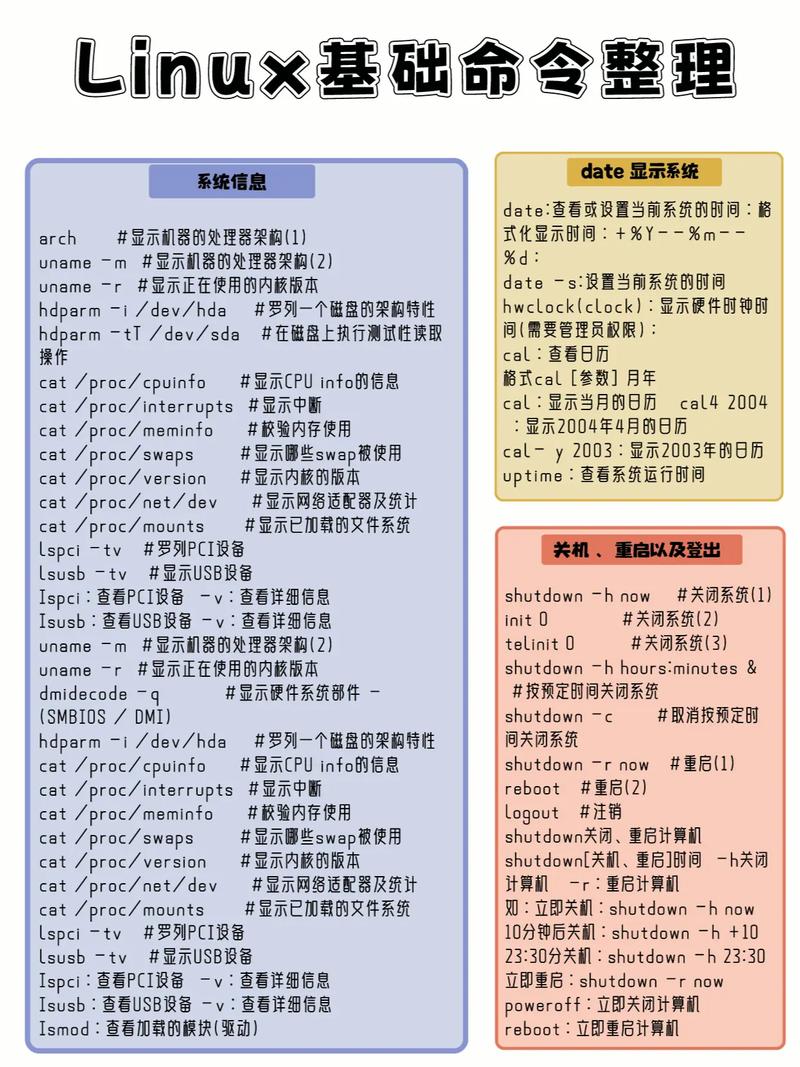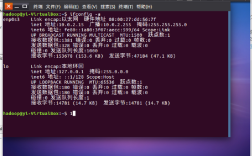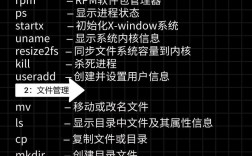在Linux系统中,了解当前操作系统的版本信息是系统管理、软件安装或故障排查中的基础操作,Linux查看操作系统版本的方法多样,不同发行版或场景下适用的命令可能存在差异,以下将详细介绍常用命令及其使用场景,并辅以示例说明。

基础命令查看版本信息
-
lsb_release命令
lsb_release是Linux标准基线(LSB)工具,用于显示LSB和特定发行版的信息,适用于大多数基于Debian/Ubuntu的系统。- 常用选项:
-a:显示所有可用信息(包括发行版ID、描述、版本号等)。-i:仅显示发行版ID(如Ubuntu、CentOS)。-r:显示发行版版本号(如20.04、7.9)。
- 示例:
lsb_release -a
输出示例:
Distributor ID: Ubuntu Description: Ubuntu 20.04.3 LTS Release: 20.04 Codename: focal
- 常用选项:
-
/etc/os-release文件
该文件是现代Linux系统的标准配置文件,包含发行版的详细信息,几乎所有发行版均支持。- 查看方法:
cat /etc/os-release
输出示例(Ubuntu):
 (图片来源网络,侵删)
(图片来源网络,侵删)PRETTY_NAME="Ubuntu 20.04.3 LTS" VERSION_ID="20.04" VERSION_CODENAME=focal ID=ubuntu ID_LIKE=debian HOME_URL="https://www.ubuntu.com/" SUPPORT_URL="https://help.ubuntu.com/" BUG_REPORT_URL="https://bugs.launchpad.net/ubuntu/" PRIVACY_POLICY_URL="https://www.ubuntu.com/legal/terms-and-policies/privacy-policy" VERSION="20.04.3 LTS (Focal Fossa)"输出示例(CentOS):
NAME="CentOS Linux" VERSION="7 (Core)" ID="centos" ID_LIKE="rhel fedora" VERSION_ID="7" PRETTY_NAME="CentOS Linux 7 (Core)" ANSI_COLOR="0;31" CPE_NAME="cpe:/o:centos:centos:7" HOME_URL="https://www.centos.org/" BUG_REPORT_URL="https://bugs.centos.org/" - 提取特定字段:可通过
grep命令快速获取关键信息,如:grep PRETTY_NAME /etc/os-release
- 查看方法:
-
hostnamectl命令
该命令用于查看或修改系统主机名信息,同时会显示操作系统版本、内核版本等,适用于systemd系统。- 示例:
hostnamectl
输出示例:
Static hostname: ubuntu-server Icon name: computer-vm Chassis: vm Machine ID: XXXXXXXX Boot ID: XXXXXXXX Operating System: Ubuntu 20.04.3 LTS Kernel: Linux 5.13.0-28-generic Architecture: x86-64
- 示例:
针对特定发行版的命令
-
Red Hat系列(CentOS、RHEL、Fedora)
rpm命令:通过查询centos-release或redhat-release包获取版本信息。rpm -q centos-release # CentOS rpm -q redhat-release # RHEL
输出示例:
centos-release-7-9.2009.0.el7.centos.x86_64。/etc/redhat-release文件:传统方式,直接显示版本号。cat /etc/redhat-release
输出:
CentOS Linux release 7.9.2009 (Core)。
-
Debian/Ubuntu系列
/etc/debian_version文件:显示Debian版本号(Ubuntu基于Debian,部分版本也支持)。cat /etc/debian_version
输出示例:
9(对应Debian 10/Buster)或bullseye/sid(测试版)。apt命令:通过查询lsb-release包获取信息(需安装)。apt show lsb-release
-
SUSE系列
/etc/SuSe-release文件(旧版)或/etc/os-release(新版)。cat /etc/SuSe-release
输出示例:
SUSE Linux Enterprise Server 12 SP5。zypper命令:通过查询release包获取。zypper info release
内核版本与硬件架构信息
除操作系统版本外,内核版本和硬件架构信息也常需查看:
uname命令:uname -a # 显示所有内核信息 uname -r # 仅显示内核版本 uname -m # 显示硬件架构(如x86_64、aarch64)
输出示例:
Linux ubuntu-server 5.13.0-28-generic #31-Ubuntu SMP Thu Oct 14 15:22:25 UTC 2021 x86_64 x86_64 x86_64 GNU/Linux。
命令对比与适用场景
| 命令/文件 | 适用发行版 | 优点 | 缺点 |
|---|---|---|---|
lsb_release |
Debian/Ubuntu等 | 信息全面,标准化输出 | 需安装lsb-release包 |
/etc/os-release |
所有现代Linux发行版 | 无需安装,信息详细 | 需手动解析字段 |
hostnamectl |
systemd系统(主流发行版) | 同时显示主机名和系统信息 | 仅适用于systemd环境 |
rpm//etc/redhat-release |
Red Hat系列 | 直接准确 | 仅限RHEL/CentOS等 |
/etc/debian_version |
Debian/Ubuntu | 简单直观 | 信息较少,仅版本号 |
相关问答FAQs
Q1: 为什么执行lsb_release -a提示“command not found”?
A: 该错误通常表示系统未安装lsb-release包,可通过以下命令安装:
- Debian/Ubuntu:
sudo apt update && sudo apt install lsb-release - CentOS/RHEL:
sudo yum install redhat-lsb-core - Fedora:
sudo dnf install redhat-lsb-core
Q2: 如何通过脚本判断操作系统类型并执行对应操作?
A: 可结合/etc/os-release文件中的ID字段编写条件判断,
#!/bin/bash
source /etc/os-release # 加载变量
if [ "$ID" = "ubuntu" ]; then
echo "This is Ubuntu, running apt update..."
sudo apt update
elif [ "$ID" = "centos" ]; then
echo "This is CentOS, running yum update..."
sudo yum update
else
echo "Unsupported OS"
fi
脚本通过读取ID变量(如ubuntu、centos)实现分支操作,适用于自动化运维场景。




